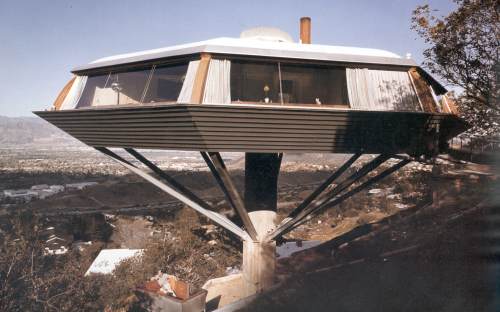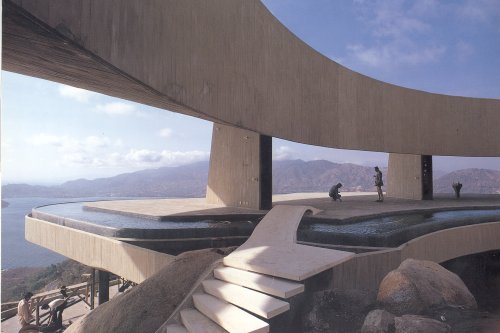vanshnookenraggen said:
I'm just waiting for some reporter to liken this building to the Guggenheim in New York (I say that with the underlying belief that Bostonians always compare their city to New York even when a comparison isn't justified or relateable, though the argument could be made here.)
Though comparison to the (original? real?) Guggenheim is silly for a number of reasons, the ICA's form and nature (think building-as-observatory) is surely derived from Wright's work, along with that of his apprentice, John Lautner...
The both Fallingwater and the Sturgis House (in Brentwood, CA. - John Lautner's last assignment as a Taliesin apprentice) share a bold cantilevered form that turns the domestic space into a kind of "viewing platform"...Wright experimented with this technique during his Usonian period...
The Sturgis house is seen on the cover of this outstanding book by Alan Hess, with terrific photos by Alan Weintraub:
http://www.amazon.com/exec/obidos/ASIN/0847827364/ref=nosim/nordellbookst-20
(I don't think I need to post pix of Fallingwater...)
Throughout his career, John Lautner expanded and perfected Wright's ideas of framing or "capturing" the view, frequently abandoning Wright's geometric fussiness for free forms inspired by Oscar Niemeyer and Alvar Aalto.
The Chemosphere, Los Angeles, 1960
The Arango house, Acapulco, 1973
Sheats-Goldstein House, Los Angeles, 1963
In considering Diller + Scoffido's ICA, there is a blending of concepts familiar to fans of the organic, classic modernism, and conceptual work of Rem Koolhaas & OMA (in particular, the ribbon-form that snakes its way through the building's elevation)...
The mechanical corral on the roof looks lousy, but I think the building rocks otherwise...





